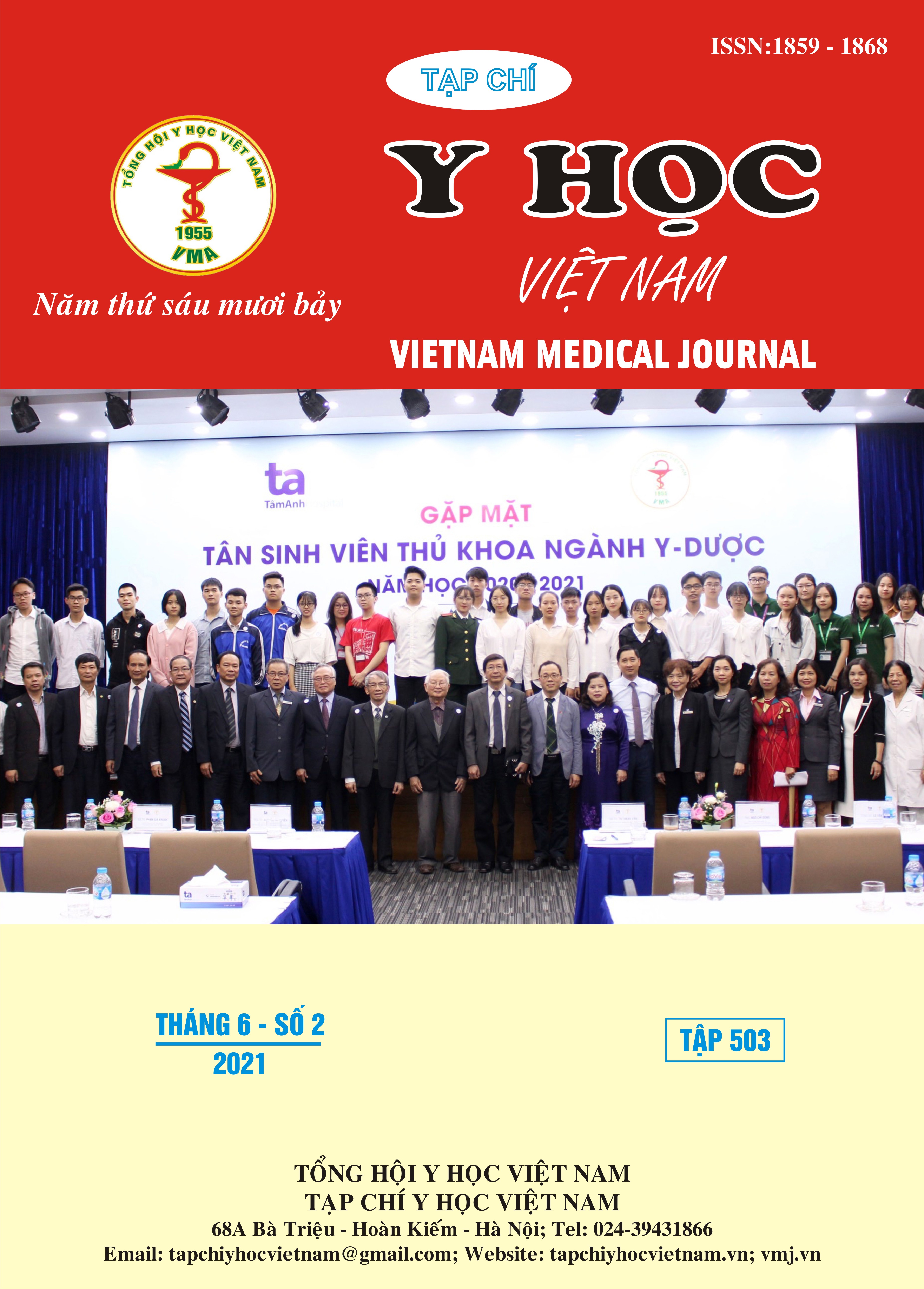EFFICIENCY OF TRANSCERVICAL FOLEY CATHETER WITHIN CERVICAL CANAL FOR INDUCTION OF LABOR ON WOMEN BEYOND 40 WEEKS GESTATION AT TU DU HOSPITAL
Main Article Content
Abstract
Background: Foley catheter as an induction agent has already been shown as a clinically effective, simple, and low-cost method, and widely used in Vietnam. The decision about the right time to indicate labor induction, which not only is effective but also reduces marternal and fetal mortality and morbidity rate, is increasingly concerned. Objective: To identify the labor induction success rate on women beyond 40 weeks gestation indicated transcervical Foley catheter at Tu Du Hospital. Methods: The study reported on series of 385 pregnant women beyond 40 gestational weeks before the spontaneous onset of labor, conducted between November 2020 and April 2021 at Tu Du Hospital. Results: The rate of labor induction success accounts for 83.11% [95%CI: 79.35-86.87]. The balloon self-fall/ deflated factor is associated with successful rate PR = 0.51 [95%CI: 0.29-0.91]. The vaginal delivery rate is 44.94% with 3 relative factors: nulliparous or multiparous factor, history of Cesarean delivery factor and efficiency of Foley labor induction factor. Conclusions: The rate of labor induction success accounts for 83.11%. This is a highly successful labor induction method, helping to increase the likelihood of vaginal delivery with insignificant rate of complications, which can be monitored and provided early interventions.
Article Details
Keywords
Labor induction, Transcervical Foley catheter, 40 weeks gestation
References
2. Ngô Minh Hưng (2019), “Hiệu quả khởi phát chuyển dạ với ống thông Foley đôi cải tiến trên thai kỳ quá ngày dự sinh có chỉ định chấm dứt thai kỳ tại Bệnh viện Nhân dân Gia Định”, Tạp chí Y học TPHCM, 23(2):121-126.
3. Nguyễn Bá Mỹ Ngọc (2013), ”So sánh hiệu quả khởi phát chuyển dạ của Prostaglandin E2 và ống thông Foley ở thai 37 tuần thiểu ối”, Tạp chí Y học TPHCM,17(1):149-155.
4. Nguyễn Thị Anh Phương (2016), “So sánh hiệu quả khởi phát chuyển dạ của thông Foley bóng đôi cải tiến và bóng đơn đặt kênh cổ tử cung ở thai trưởng thành tại Bệnh viện Hùng Vương”, Tạp chí Y học TPHCM,20(1):316–321.
5. Lê Thị Hồng Vân (2014), “Hiệu quả ống thông Foley trong khởi phát chuyển dạ ở thai phụ có tiền căn mổ lấy thai”, Luận văn Bác sĩ nội trú ĐHYD TPHCM
6. Gary Cunningham (2018), “Induction and Augmentation of Labor”, Williams Obstetrics 25th, Chapter 26.
7. Gary Cunningham (2018), “Physiology of Labor”,Williams Obstetrics 25th, Chapter 21
8. Grobman W. A (2018), ”Labor Induction versus Expectant Management in Low-Risk Nulliparous Women”, N Engl J Med,379(6):513-523


